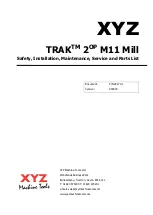
ES-2000 Series Switch Support Notes
All contents copyright (c) 2006 ZyXEL Communications Corporation.
58
For each LAN segment (collision domain), there is a designated port. The
designated port has the lowest cost to the root bridge. Designated ports are
normally in the forwarding state to forward and receive traffic to the segment. If
more than one port in the segment have the same path cost, the port on which
bridge has lowest bridge ID is selected as a designated port.
1. How STP works
After STP determines the lowest cost spanning tree, it enables all root ports
and designated ports, and disables all other ports. Network packets are
therefore only forwarded between root ports and designated ports, eliminating
any possible network loops. STP-aware devices exchange Bridge Protocol
Data Units (BPDUs) periodically. When the bridged LAN topology changes, a
new spanning tree is constructed.
Once a stable network topology has been established, all bridges listen for
Hello BPDUs (Bridge Protocol Data Units) transmitted from the root bridge. If a
bridge does not get a Hello BPDU after a predefined interval (Max Age), the
bridge assumes that the link to the root bridge is down. This bridge then
initiates negotiations with other bridges to reconfigure the network to
re-establish a valid network topology.
For example:
Switch A:
MAC = 00A0C5111111,
Priority = 32768
Switch B:
MAC = 00A0C5222222,
Priority = 32768
Switch C:
MAC =
00A0C5333333
Priority = 1
Port 1 Port 2
Port 1 Port 2
Port 1
Cost 19
100 Cost 19
100 Cost 19
Priority 128
128
Priority 128 128 Priority 128
















































